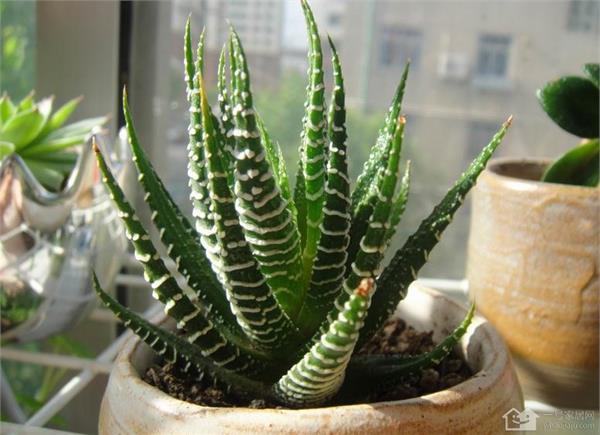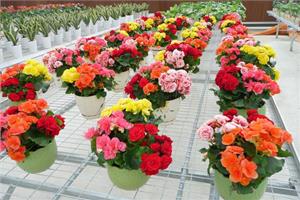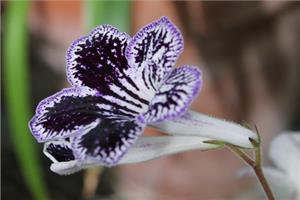The skill of balcony culture in 12 volumes
For some small houses, owners want to raise flowers and plants, only on the balcony can be displayed. The use of limited balcony space to cultivate flowers and plants, so that the small space is full of life. Today, let's learn how to breed twelve rolls on the balcony. Owners who like green plants should not miss it.

The following is the specific breeding process:
First, about the selection of pots: because the roots of the 12 rolls are thick and long radish roots, it is necessary to choose a deeper basin (figure 1).
Except for purple sand basins for ice lights and neon lights, I use Vientiane basins. I used to use Vientiane pots of all sizes and sizes. In the past, I liked to use the same size, but I found that under the same conditions of management, some are good and some are not. This is because the seedlings use too large pots, the water in the pots volatilizes too fast, the roots of the seedlings are generally not very strong, and the slow state of not absorbing water is not good; the pots used for large plant types are too small, because the roots are good, and the water in the small pots is absorbed too fast, resulting in inadequate water supply and nutrition. So to sum up, what kind of pot to choose depends on the size of the plant type. Because I use one pot and one pot, the problem of living in groups in seedling pots is still shallow. )
Second, on the allocation of soil: when it comes to the use of soil, the first sentence is to match yourself according to your own breeding environment and watering methods. Since entering the pit has been around the greenhouse, some old masters like to use more particles, some like to use more peat, according to their own like to come. Speaking of my soil, about 35% 3-6MM ordinary Chiyu plus 35% 3-6MM deer marsh soil plus 25% volcanic rock, the rest is made of bamboo charcoal and rice bran ash accounting for about 5% with a little bit of green medicine. (adult plants do not need peat particles, Chiyu deer marsh basically accounts for more than 90% plus a layer of slow-release fertilizer).
The above soil is based on having roots. As for the soil that needs hairy roots or leaf insertion, the peat is used instead of peat particles. Peat differs from peat particles only in breathability. (because I am a balcony clan and like to keep stuffy, so the ventilation is not as good as the greenhouse, so different situations use different soil.) here is my soil mix:
Third, about watering: from the very beginning, I have heard many people say these four words: dry and thoroughly watered. Correct but not complete, I like to use particles to grow 12 rolls, so it will be faster to dry, but how to dry thoroughly? Some people like the method of inserting toothpicks, some like the method of padding weight, and others rely entirely on experience, but I think there is another way to identify seedlings with weak roots. I think there is another way to shake the plant and feel that the root system is very loose. is it not as firm as it feels after it has just been watered? I often shake it every few days and feel that it is almost watered.
Water at noon in winter and in the evening or evening in summer to keep the roots from frostbite and burns. As I said earlier, dry and thoroughly poured is correct but not complete, the most important thing is that after watering, it must be blown in a ventilated place for a period of time, because to make the soil damp, too wet and stuffy is a disaster for me, who likes to keep it stuffy.
Fourth, about the environment: this I like stuffy, outdoor stuffy. In spring, autumn and winter, we use glass vats to keep them stuffy, and in summer, we honestly put them indoors for summer. The advantage of stuffy culture lies in high humidity and large temperature difference between day and night. This is the favorite environment of 12 volumes, and there is also a limit. The temperature generally does not exceed 35 degrees, and the humidity does not exceed 80%. If it is daylighting, it cannot be exposed directly. For 12 volumes, ultraviolet rays are too strong and easy to hurt. Soft scattered light is needed. I don't know what this softness is, but it can only be indescribable. You can put it indoors in winter.
The above is the relevant introduction of this article, I believe you have a simple understanding of this after reading it, if necessary, you can continue to pay attention to the No. 1 home network for more information.
Related
- Wuhan Hospital Iron Tree Blooming Result Was Instantly Frightened by the Gardener Master
- Which variety of camellia is the most fragrant and best? Which one do you like best?
- What is the small blue coat, the breeding methods and matters needing attention of the succulent plant
- Dormancy time and maintenance management of succulent plants during dormancy
- Minas succulent how to raise, Minas succulent plant pictures
- What are the varieties of winter succulent plants
- How to raise succulent plants in twelve rolls? let's take a look at some experience of breeding twelve rolls.
- Attention should be paid to water control for succulent plants during dormant period (winter and summer)
- Watering experience of twelve rolls of succulent plants
- Techniques for fertilizing succulent plants. An article will let you know how to fertilize succulent plants.



